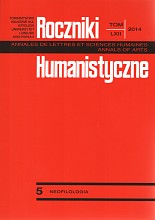Carnival Revisited: The Return of the Clown in Thomas Ligotti’s “The Last Feast of Harlequin”
Carnival Revisited: The Return of the Clown in Thomas Ligotti’s “The Last Feast of Harlequin”
Author(s): Patrycja AntoszekSubject(s): Literary Texts
Published by: Towarzystwo Naukowe KUL & Katolicki Uniwersytet Lubelski Jana Pawła II
Keywords: abject; carnival; carnivalesque; clown; gothic; horror literature; transgression
Summary/Abstract: Although carnival as a social phenomenon has been virtually eliminated from cultural life, carnivalesque imagery seems to pervade a lot of contemporary writing. In Thomas Ligotti’s “The Last Feast of Harlequin” a modern winter festival turns out to be only a mask for a sinister underground anti-fertility rite. The article explores the ways in which horror literature uses carnival’s transgressive potential and leading images to create an ambivalent space of chaos, evil, and perversity. In a truly grotesque reversal of carnival spirit, the Bakhtinian rejuvenating laughter is replaced by a mourning chant and celebration of “many shapes of death.” What is more, the dark ceremony in the story may be seen as an enactment of the narrator’s own pathological obsessions and private terrors. By revealing a contemporary festival’s hidden meaning and function, the story seems to comment upon the very process of the cultural suppression of carnival and gothic fiction’s subsequent appropriation of various cultural abjections framed in carnival’s ambivalent aesthetics.
Journal: Roczniki Humanistyczne
- Issue Year: 62/2014
- Issue No: 05
- Page Range: 135-144
- Page Count: 10
- Language: English

